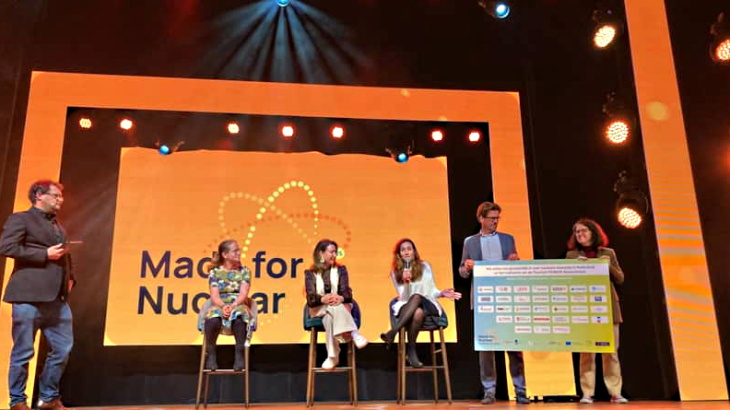Japan has received around 200 international suggestions on concepts to remove the remains of the Fukushima Daiichi reactor cores.
Facing the unprecedented task of cleaning up three destroyed reactors, Japan created the International Research Institute for Nuclear Decommissioning (IRID) to bring the best of global nuclear industry practice to the problem. It launched a request for information last year and between December 2013 and January 2014 the world's nuclear clean-up specialists submitted some 200 ideas.
IRID will now use a special team as well as outside experts to analyse and sort the submissions by the end of March. Some will be selected and taken forward as the basis for conceptual studies and requests for proposals. Planning the fuel removal and the developing the tools to do it is expected to take until around 2020.
Different computer models have been used by Tepco and the Japan Atomic Energy Agency to analyse the positions of the cores, coming to the same conclusion for unit 1. Both models predict that all 77 tonnes of the fuel from unit 1 melted and passed from the reactor vessel to the drywell area immediately below. At units 2 and 3 the models differed but together indicated that 30-40% of their 107-tonne cores remain in the vessels, the rest in the drywell.
_460x309.jpg) |
| How a custom machine could be installed to tackle the fuel debris (red) in the flooded primary containment vessel (PCV) |
Subject to revision in light of the suggestions IRID has received, Tepco's outline plan to tackle the debris is to flood the containment vessels and reach down their full length from the top to remotely handle the remains. Work over this distance of 25-35 metres requires advanced measurement tools such as cameras and laser scanners as well as temperature, pressure and radiation monitors. All of these must operate reliably underwater in a very high radiation environment. Tepco also noted that the steel structures below the reactor vessel are very complex. Each vessel also has up to 200 penetrations, while the space between the reactor vessel and containment vessel is cramped and therefore a challenging place to install any new machinery.
An extra difficulty is the need to seal the containment, which was compromised during the accident. Tepco has not yet been able to find the points from which water injected to cool the cores escapes to fill the rooms and spaces in the bottom of the reactor buildings.
The ideas with IRID include alternatives to the full-flooding approach, as well as potential methods to reach the debris from the side by making new penetrations in the containment and the building structure.
Researched and written
by World Nuclear News




_16403_79272.jpg)


_69218.jpg)

_76087_55556.jpg)



